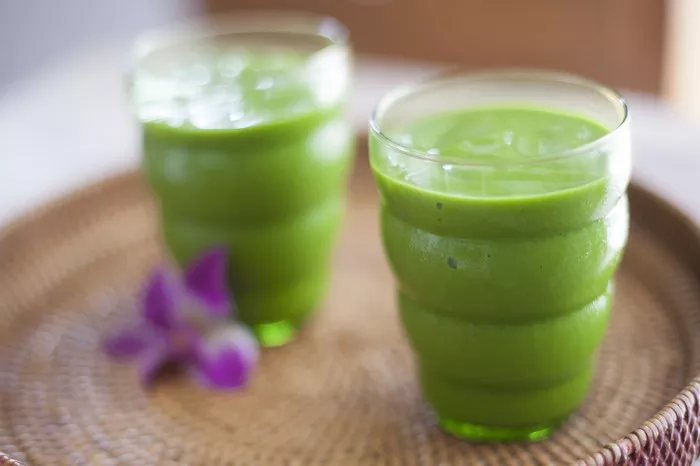Japanese cuisine is celebrated worldwide for its harmonious blend of flavors, meticulous preparation, and emphasis on fresh, high-quality ingredients. Whether you’re an avid home cook or a culinary enthusiast, exploring classic Japanese recipes can be a rewarding journey. In this professional guide, we will delve into the top five best Japanese classics that you can master in your kitchen. From sushi to ramen, these recipes showcase the essence of Japanese culinary artistry.
Top 5 Best Japanese Classics Recipes to Master
1. Sushi: The Art of Hand-Rolled Perfection
Sushi stands as a culinary ambassador for Japanese cuisine, celebrated for its exquisite presentation and delicate flavors. While there are various types of sushi, mastering the art of hand-rolled sushi, or maki sushi, is a rewarding venture. Here’s a simplified guide to crafting perfect sushi rolls at home:
Ingredients for Sushi Rice:
2 cups sushi rice
2 1/2 cups water
1/3 cup rice vinegar
3 tablespoons sugar
1 teaspoon salt
Ingredients for Sushi Rolls:
Nori (seaweed) sheets
Sliced fresh fish (like tuna or salmon)
Vegetables (cucumber, avocado, or carrot strips)
Soy sauce, pickled ginger, and wasabi for serving
Prepare Sushi Rice: Rinse the sushi rice until the water runs clear. Cook the rice with water in a rice cooker or on the stove. While the rice is still warm, gently fold in a mixture of rice vinegar, sugar, and salt. Allow it to cool to room temperature.
Assemble Sushi Rolls: Place a bamboo sushi rolling mat on a flat surface and put a sheet of nori on it, shiny side down. Wet your hands and spread a thin layer of sushi rice over the nori, leaving a small border at the top.
Add Fillings: Arrange thin strips of fresh fish and vegetables horizontally across the center of the rice. You can customize the fillings based on your preferences.
Roll the Sushi: Lift the edge of the bamboo mat closest to you, and using it as a guide, roll the sushi away from you, pressing gently to shape it. Seal the edge with a little water.
Slice and Serve: Using a sharp, wet knife, slice the sushi roll into bite-sized pieces. Serve with soy sauce, pickled ginger, and wasabi.
2. Ramen: A Bowl of Soul-Warming Comfort
Ramen, a beloved Japanese comfort food, has gained international acclaim for its rich broth, chewy noodles, and diverse toppings. While there are various ramen styles, mastering the basics allows you to create your personalized bowl. Here’s a simplified guide to making a classic Shoyu Ramen:
Ingredients for Shoyu Ramen:
4 cups chicken or vegetable broth
2 tablespoons soy sauce
1 tablespoon mirin (sweet rice wine)
1 tablespoon sake (Japanese rice wine)
1 teaspoon sesame oil
2 packs ramen noodles
Toppings: Sliced green onions, bamboo shoots, nori, soft-boiled eggs, and sliced pork or chicken.
Prepare Broth: In a pot, combine chicken or vegetable broth, soy sauce, mirin, sake, and sesame oil. Bring to a simmer and let it cook for at least 15-20 minutes to allow the flavors to meld.
Cook Ramen Noodles: Cook the ramen noodles according to the package instructions. Drain and set aside.
Assemble Ramen Bowls: Divide the cooked noodles among serving bowls. Pour the hot broth over the noodles.
Add Toppings: Customize your ramen bowls with an array of toppings such as sliced green onions, bamboo shoots, nori, soft-boiled eggs, and your choice of sliced meat.
Serve Immediately: Enjoy the Shoyu Ramen immediately while it’s hot. Slurping is not only allowed but encouraged in Japanese culture as it enhances the dining experience.
3. Tempura: Crispy Perfection from the Fryer
Tempura, known for its light, crispy batter coating, offers a delightful contrast to the succulent seafood or vegetables within. Mastering the art of tempura requires attention to detail and proper technique. Here’s a guide to creating impeccable tempura at home:
Ingredients for Tempura Batter:
1 cup all-purpose flour
1 cup ice-cold water
1 egg yolk
Ice cubes
Ingredients for Tempura:
Assorted vegetables (sweet potatoes, zucchini, bell peppers)
Seafood (shrimp, squid, or fish fillets)
Tempura dipping sauce (Tentsuyu)
Prepare Tempura Batter: In a bowl, whisk together flour, ice-cold water, and egg yolk. Be careful not to overmix; lumps are acceptable. Add a handful of ice cubes to keep the batter cold.
Prep Ingredients: Cut vegetables and seafood into bite-sized pieces. Pat them dry with paper towels to ensure the batter adheres well.
Heat Oil: Heat vegetable oil in a deep fryer or a heavy-bottomed pot to 340-350°F (170-180°C).
Dip and Fry: Dip the vegetables or seafood into the tempura batter, allowing excess to drip off, and carefully place them in the hot oil. Fry until golden brown and crispy.
Drain Excess Oil: Once fried, use a slotted spoon to transfer the tempura to a plate lined with paper towels to drain excess oil.
Serve with Tempura Dipping Sauce: Pair the tempura with a dipping sauce made by combining soy sauce, mirin, and dashi (Japanese stock). Add grated daikon radish or ginger for additional flavor.
4. Miso Soup: Umami in a Bowl
Miso soup, a staple in Japanese households, is celebrated for its comforting warmth and umami-rich flavors. Mastering this simple yet nuanced dish allows you to savor the essence of Japanese cuisine. Here’s a guide to crafting a classic Miso Soup:
Ingredients for Miso Soup:
4 cups dashi (Japanese stock)
3 tablespoons miso paste (white or red)
1 cup tofu, cubed
1 cup seaweed (wakame), rehydrated
2 green onions, thinly sliced
Prepare Dashi: In a pot, bring 4 cups of water to a simmer, and add dashi stock powder or use homemade dashi made from kombu (seaweed) and bonito flakes.
Add Tofu: Once the dashi is simmering, add cubed tofu. Allow it to simmer for a few minutes until the tofu is heated through.
Rehydrate Seaweed: Soak the dried seaweed (wakame) in warm water for about 5 minutes or until rehydrated. Drain and add to the pot.
Dissolve Miso Paste: In a small bowl, dissolve miso paste in a ladleful of the hot dashi. Use a whisk or spoon to ensure the miso is completely dissolved.
Add Miso to Soup: Gradually add the dissolved miso paste to the pot, stirring gently to incorporate. Avoid boiling the miso, as it can lose its delicate flavor.
Adjust Flavors: Taste the soup and adjust the flavor by adding more miso paste if needed. Be cautious with the saltiness, as miso varies in salt content.
Serve with Green Onions: Just before serving, add thinly sliced green onions to the miso soup. This adds a fresh and aromatic touch.
5. Teriyaki Chicken: A Sweet and Savory Delight
Teriyaki Chicken, with its sweet and savory glaze, is a Japanese classic that has captivated taste buds around the globe. Mastering the art of teriyaki requires a perfect balance of sweetness, saltiness, and umami. Here’s a guide to creating a delightful Teriyaki Chicken dish:
Ingredients for Teriyaki Sauce:
1/2 cup soy sauce
1/4 cup mirin (sweet rice wine)
2 tablespoons sake (Japanese rice wine)
2 tablespoons sugar
Ingredients for Teriyaki Chicken:
4 boneless, skinless chicken thighs or breasts
Salt and pepper for seasoning
2 tablespoons vegetable oil
Sesame seeds and sliced green onions for garnish
Prepare Teriyaki Sauce: In a saucepan, combine soy sauce, mirin, sake, and sugar. Heat over medium heat, stirring until the sugar dissolves. Simmer for a few minutes until the sauce thickens slightly. Set aside.
Season and Cook Chicken: Season the chicken with salt and pepper. In a skillet, heat vegetable oil over medium-high heat. Sear the chicken until browned on both sides and cooked through.
Brush with Teriyaki Sauce: Brush the cooked chicken with the prepared teriyaki sauce, ensuring each piece is well coated. Allow the sauce to caramelize slightly on the chicken.
Slice and Garnish: Once glazed, remove the chicken from the skillet and let it rest for a few minutes before slicing. Garnish with sesame seeds and sliced green onions.
Serve with Rice: Enjoy the Teriyaki Chicken over a bed of steamed rice. Drizzle any remaining teriyaki sauce over the top for extra flavor.
Conclusion:
Embarking on a culinary journey to master these top five Japanese classics will not only enhance your cooking skills but also transport your taste buds to the heart of Japan. From the precision of sushi rolling to the soul-warming comfort of ramen and the delicate balance of teriyaki, each dish offers a unique glimpse into the rich tapestry of Japanese cuisine. Embrace the artistry, savor the flavors, and let these classic recipes become a cherished part of your culinary repertoire. Happy cooking!



















